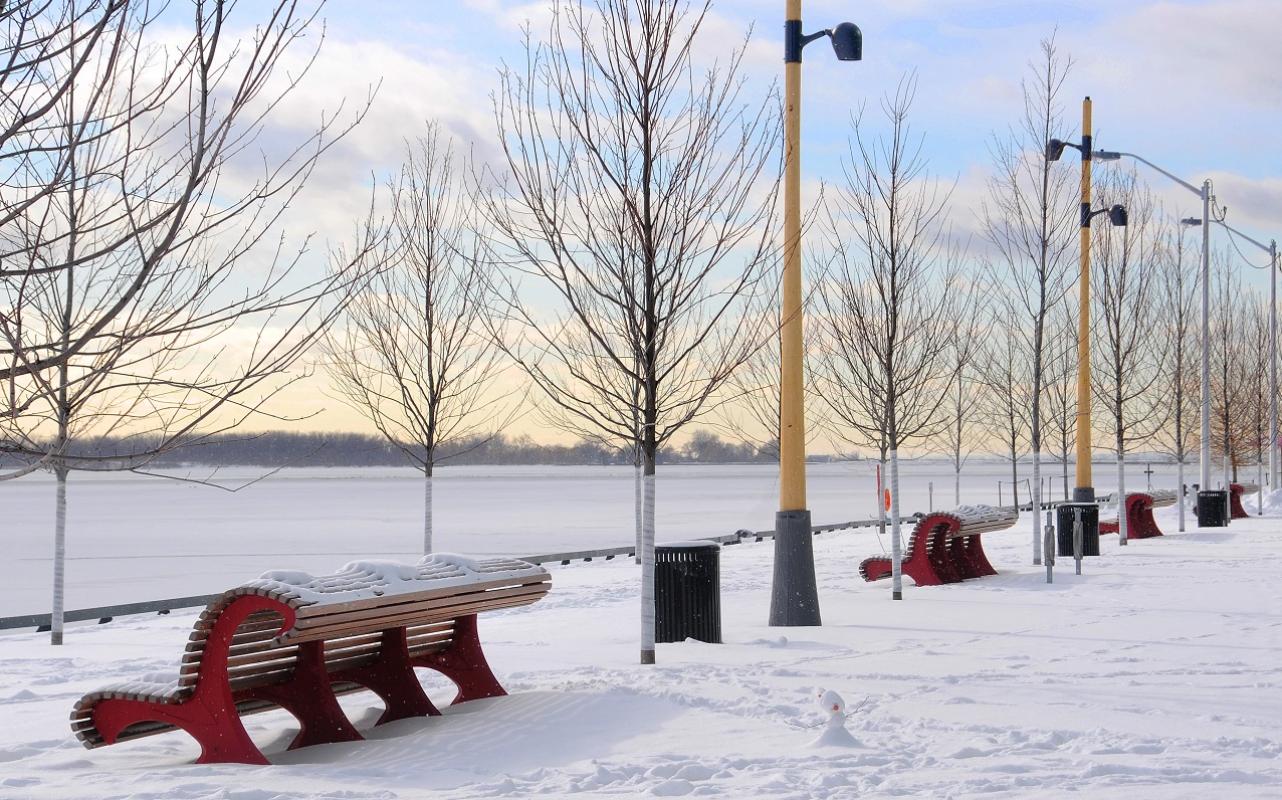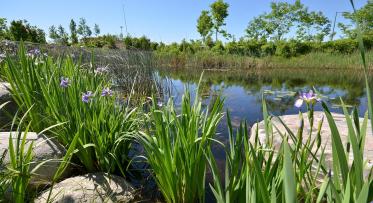A winter guide to fostering healthy streets in Toronto
Located in East Bayfront, the Water’s Edge Promenade is just one of the many pedestrian and cyclist routes next to Lake Ontario that is just as beautiful in the winter as it is in the summer.
PUBLISHED: JANUARY 17, 2019
BY: MEGHAN HOGAN
After an unseasonably warm start to the winter season, it looks as though the cold weather has arrived and is here to stay. As Torontonians, we’ve seen it all throughout this time of year – from gentle flurries that slowly blanket our city of a thin veil of white to furious ice storms that leave no surface untouched. Whether you love or hate the snow, we can all agree that keeping our streets safe and accessible is a top priority for pedestrians, cyclists and drivers across the city. And while there are many methods to managing snow and ice, we’re here to let you know that some methods could be negatively impacting the environment, including nearby trees and waterways.
In an effort to educate local residents and business owners about how they can contribute to the health of the waterfront’s main street – Queens Quay – we developed an easy-to-follow brochure [PDF] that outlines sustainable de-icing practices. However, Queens Quay isn’t the only Toronto street that could benefit from sustainable winter maintenance strategies. These practices can be implemented anywhere in the City, including your very own driveway!
Here’s how you can contribute to the overall health of the local ecosystem this winter…
What to know about rock salt
You may not be surprised to learn that rock salt – a form of chemical de-icer – is the most commonly used de-icing material. But did you know that it is also one of the most corrosive and toxic de-icing materials on the market? Using rock salt to de-ice sidewalks and roadways negatively affects our lake, and damages streetscapes and trees. Once the salt dissolves the snow and ice, it seeps into nearby soil and enters waterways through runoff. At high concentrations, the chloride in salt can damage or even kill vegetation and trees growing nearby. It can also be toxic to aquatic wildlife and negatively impacts our drinking water.
Luckily, there are several environmentally-friendly de-icing alternatives to rock salt that are equally as effective. Using less rock salt will not only create safer sidewalks and roadways, but it will also save you money and prevent excess salts from damaging the environment.
De-icing alternatives
We’ve put together a list of de-icing alternatives to rock salt that are sustainable and easy to implement. So, if you need to clear a sidewalk, driveway or roadway this winter, please consider using one of the following methods:
Shovel
Always shovel or plow before resorting to de-icing products! We recommend clearing away the snow as soon as you can so that it doesn’t become ice. If any ice patches form, use an ice chopper to break it up and remove it.
Calcium Magnesium Acetate (CMA)
CMA is an environmentally-friendly alternative to rock salt that is works best when used between 0° and -7° Celsius. We recommend using 1-3 tablespoons of CMA per one metre square area.
Sand
Using sand, grit and non-clumping kitty litter are great alternatives that help reduce the risk of slipping during the colder months, especially when it’s too cold for CMA or salt to work. You can use this method in temperatures that reach -7° Celsius and below.
Use less salt
While we recommend avoiding rock salt whenever possible, we wanted to ensure that those of you who continue to use it are doing so in an environmentally-conscious manner. Salt only works between 0° and -10° Celsius. One tablespoon of salt per one metre square area is all that needed. Small grain salt works best.
Not sure which method to use? This easy-to-follow graphic highlights which methods work best as the temperatures continue to drop this winter.





